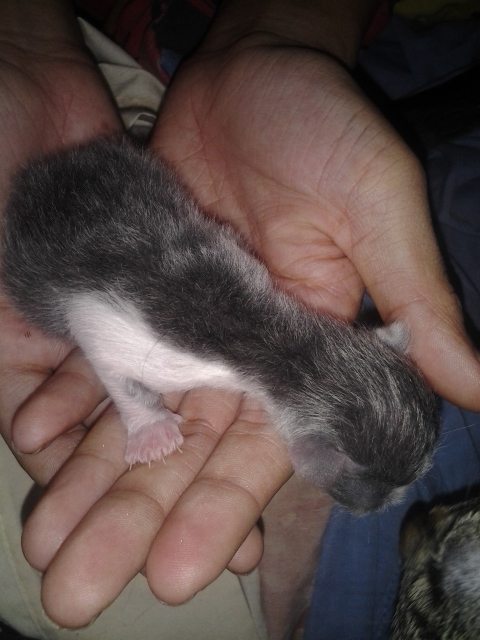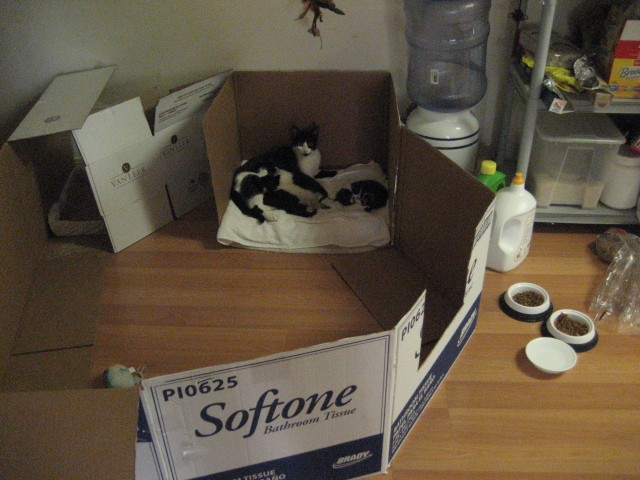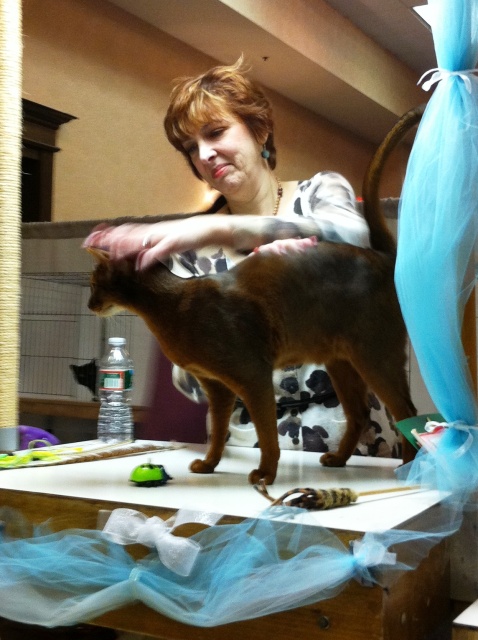QuestionHi Holly :)
My family had to put down my almost 16-year old male tabby last Tuesday :(. We got he and his sister at the same time when I was 6 years old. His sister, Nala, is still alive and well *knock wood*. She's very friendly with people she knows, and is a pretty laid-back cat. She prefers to lie on her back and use her cuteness to get people to come pet her. She's awesome. Since her brother died, though, she's been complaining a LOT. She meows with this tone that I only hear when she's distressed. Plus, she seems to be looking for him. It breaks my heart.
My mom recently suggested that we get my girl a new companion. I'm seriously considering it. We've visited a local shelter and saw a gorgeous, relatively laidback neutered boy cat who may just get along with her. Is a boy a better option than a girl, considering she lived with a boy her whole life? And should we be looking at older cats? The one we've visited is 6-7 years old.
I'm really worried about shocking her or adding to her distress, but I also can't bare the thought of her becoming depressed. My mom, sister and I aren't home during the day so she's all by herself in our house without her brother.
Do you have any thoughts on whether or not it's a good idea to adopt a kitty as her new companion?
Thank you so much for your time!
Ash
AnswerHi Ashley,
I'm sorry to hear about your loss. Losing a pet is always a difficult thing, but please remember to be thankful that your companion made it sixteen years--I lost some fosters all too early.
It sounds like you and your family are ready to open your hearts and home to a new companion, and it warms my heart to know you have already visited a shelter and are considering an older cat. There are so many wonderful cats over 5 years old in need of loving homes. Sex makes no difference at all when the animals are altered (spayed/neutered), which any animal will be that you get from a shelter (thankfully). What you should be looking for is a compatible personality and activity level. If she is very dominant, you need a cat in the middle of the road, as neither a dominant nor a submissive personality will be best suited for her.
Do not worry about stressing her; once she gets used to a new cat, she will enjoy the companionship. When you adopt a new pet, they should always be kept in their own room for at least the first week. This serves many purposes, the most important being to allow your new pet to adjust to the new environment. Cats adjust much faster in a smaller space. If your pet was just altered, it is important to keep them in a small room, preferably a bathroom. They do not need to be running, jumping, or playing much the first several days following surgery. This is more important for females than males as they have stitches they can tear out. My preferred method that I have used for my 6 as well as 39 fosters is to start them off in a bathroom. This is a much smaller environment, making it easier to train them. I use this first week in the bathroom to teach them their name (say their name, if they look at you, praise), make sure they use the litter box properly and consistently, and begin training to the sisal scratch post. Also remember that when adopting from a shelter, they can commonly develop a cold (URI), which makes it even more imperative to have them in a bathroom so that they cannot get your resident cat sick and that you can clean the room properly. This is not due to any fault of the shelter, but only from the fact that the minute an animal enters a shelter, they are exposed to things they were not in their home environment. Even though they are given a vaccination for this, shots take 48-72 hours to fully become effective, so even though all of the right precautions are taken, this time lapse means that most cats will get at least mildly sick at some point. An upper respiratory infection is nothing more than a cold in a cat, and usually only cures itself with the virus running its course. The antibiotics that are prescribed are only to prevent secondary infections from developing. At any rate, the point here is to play it safe just in case. Usually adult cats in shelters have been fostered, so they have already run through their cold and been treated, but that is something you will have to inquire about.
As far as introducing them, always start by scent first. Place a towel where each commonly sleep and let them sleep on it a few days. Then, switch the towels so that they are then sleeping on each other's scent. After two days of this, put the kitten in a carrier and set it near where the resident cat is. Allow them to be around each other, and observe their reactions. The new cat will only hiss if the resident cat does because it will just be a defensive reaction. Hissing does not always mean aggression; it's just another way that they communicate. There should be no scolding; introductions are a gradual process, and there will be hissing and growling until they develop a relationship. Just make sure there there is no negative behavior going on before you take the kitten back to its room. Always start and end on a positive note. After a few days of the carrier method, let the kitten be out in the same room as the resident cat for 15 or 20 minutes. Correct any unwanted behaviors regarding the environment. If the resident cat practices avoidance and always retreats to a corner when the the new cat is out, you should put them together in a room, preferably one where the resident cat can't hide. They need to get used to each other's scent. Also, it is important that you provide the new cat with enough physical and mental stimulation with toys, cat furniture and bonding with you so that it does not view the resident cat as its only source of entertainment or companionship, as this is what will commonly cause resentment by the resident cat. Also ensure that you spend equal amounts of time with each cat separately. Before they have been introduced to each other's scent, always wash your hands after handling one before touching the other. All people in the home need to abide by the same guidelines. As detailed as this process seems, the slower the transition, the better. This is the method that I have used for all six of mine as well as 39 fosters, so I can tell you definitively that it works.
I hope all this helps, and wish you the best of luck. Please feel free to email me with any further concerns. Good luck!
Best regards,

 2 sibling cats. one of the brothers just passed.
Question
Their last day togethe
how should i dea
2 sibling cats. one of the brothers just passed.
Question
Their last day togethe
how should i dea
 Trouble with my Two female cats.
Question
The kitten Two Cats
Hello, I have
Trouble with my Two female cats.
Question
The kitten Two Cats
Hello, I have
 One month old Kitten
Question
The one month old, aka
I have tried bef
One month old Kitten
Question
The one month old, aka
I have tried bef
 mother cat needs?
Questionplay area
QUESTION: hi Jessica, my mothe
mother cat needs?
Questionplay area
QUESTION: hi Jessica, my mothe
 Best weight-loss plan for Abyssinians?
Question
Overweight Aby?
I have a year and 10 month old
Best weight-loss plan for Abyssinians?
Question
Overweight Aby?
I have a year and 10 month old